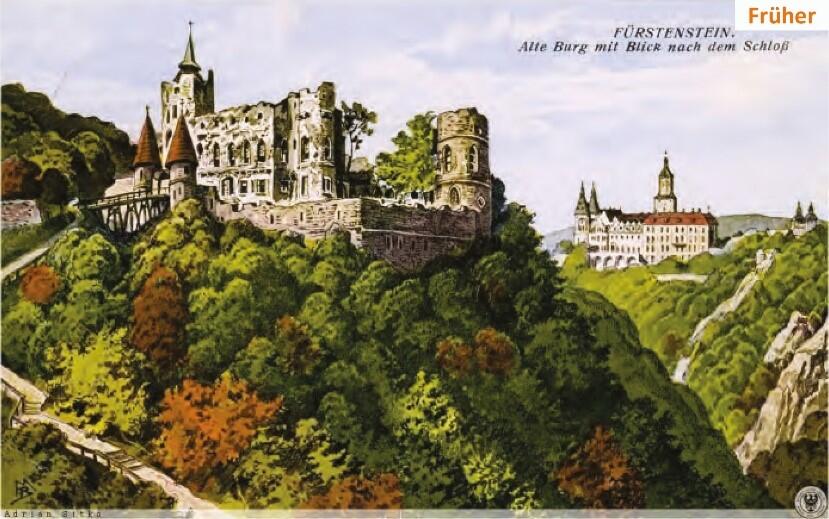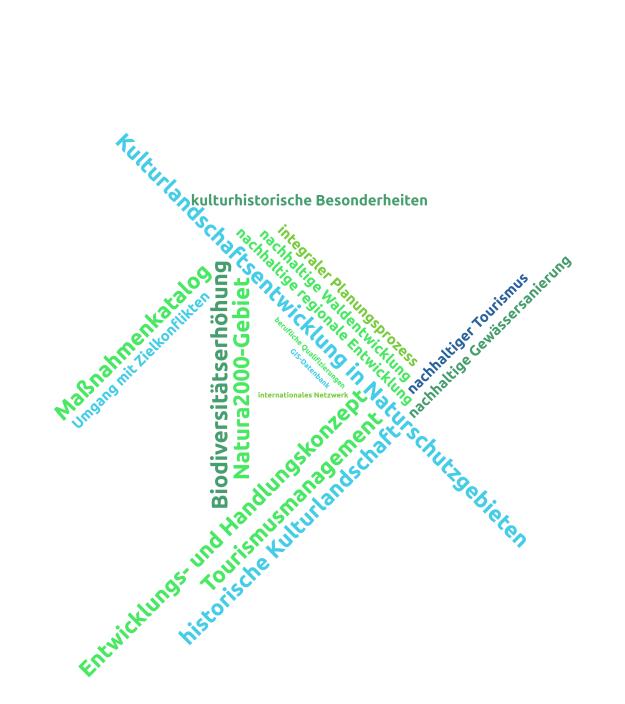German-Polish model project for integrated cultural landscape development using the example of the Fürstensteiner Grund in Lower Silesia
International project funding
Subject and goals of the project
Using the Fürstensteiner Grund landscape section as a model, an integrated development and action concept for historic cultural landscapes in nature reserves is being developed for Poland. The early involvement of institutions and authorities on local and regional level as well as the exchange between science and practice on the basis of a communication concept are essential. A GIS database, which will be established in the project, will support the planning, discussion and monitoring processes. Not only Schloss Fürstenstein, but also all other partners should benefit from the definition of the overall objective as well as strategic sub-objectives. One focus is to develop solution proposals together with all participants, without which the ecologically and culturally historically valuable landscape cannot be opened up and developed.
There are three work packages (WP):
WP 1: Integrated park and cultural landscape development
- Review of the development history
- Integrated inventory (ecological, monument preservation and cultural-historical mapping)
- Comparison with today's inventory
- Presentation of ecological, monument preservation and cultural-historical characteristics, potentials, deficits and conflicts
- Elaboration of an overall development concept (text, maps, plans, GIS data and illustrations/drawings)
- Elaboration of a catalog of measures to be implemented in the short, medium and long term on the following thematic blocks: sustainable forest development, sustainable watercourse rehabilitation, restoration and safeguarding of historic garden and park elements, development of sustainable tourism
WP 2: Communication and mediation
Parallel to the conceptual-planning work, communication and mediation methods are necessary. The goal is to sensitize local actors, professional associations and authorities as well as political decision-makers and economic forces to the Fürstenstein park and cultural landscape and to involve them at an early stage. The following measures are planned as part of this work package:
- Establishment of an expert network with expert excursions, expert workshops and information events including professional qualifications on the topics of forest, water and tourism
- Public relations, documentation and publication with project homepage, press releases for newspapers, radio, social media channels and television
AP 3: Establishment and operation of a GIS database
The aim is that the project results are integrated into the planning instruments and strategies of nature and environmental protection, forest management, water development and monument preservation for the Fürstenstein cultural landscape.
Innovation and exemplary nature of the project
In Silesia and Poland there is no comparable initiative for historic cultural landscapes, gardens and parks so far. The envisaged German-Polish cooperation offers for the first time in Poland the chance to create a project of an integrated cultural landscape development in nature reserves. For Poland, this is the first time that a project is being carried out in which ecological and monument preservation guiding principles for sustainable regional development are being established.
The project will also serve as a model for other historic park and cultural landscapes in nature reserves in Poland. The commitment of both cooperation partners to the cultural landscapes in the Masurian Steinort (Sztynort) and in the Hirschberger Tal (Kotlina Jeleniogórska) in Silesia shows the need for corresponding model projects. In both places there is a lack of integrated cultural landscape planning so far.
Special aspects of the project
The park and cultural landscape in Fürstenstein (Polish: Książ) in Lower Silesia is part of the German-Polish cultural heritage, the future of which is being shaped as part of the German-Polish project. The Fauna-Flora-Habitat Directive (FFH) and the European Landscape Convention are to be linked, supported by the concept of "Biocultural Diversity". Within the framework of the project, therefore, four thematic blocks will be implemented in the interface of natural and cultural heritage. An advisory board ensures a structural cooperation and a permanent and appropriate continuation of the project beyond its end.
Funding subject: Preservation and safeguarding of nationally valuable cultural assets from harmful environmental influences
Cooperation partners:
- Dresden University of Technology, Department of History of Landscape Architecture/Garden Monument Preservation, Dresden
- University of Natural Sciences Wroclaw, Poland
Associated partners:
- Fürstenstein Castle Administration, City of Waldenburg
- State Forestry, Forestry Office Waldenburg
- State Water Management Office, Poland
- Office for the Preservation of Monuments, Lower Silesian Voivodeship, Waldenburg Department
- Association of Lower Silesian Landscape Parks, Waldenburg Department
- Regional Directorate for Nature Protection in Wroclaw
Locations:
- Germany (focus: Dresden/Saxony)
- Poland (focus: Wałbrzych/Waldenburg, Lower Silesia)
Funding period: May 2021 to October 2023
Project costs: Total volume: 253 669 Euro, DBU funding: 251 619 Euro
DBU-AZ: 36089
Note: Translation of the German version with DeepL
Last updated: 16.11.2021




